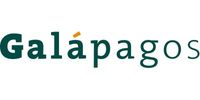
- Home
- Companies
- Galapagos NV
- Products
- Galapagos - SIK Program
Galapagos - SIK Program
The SIK program is a strategic effort to develop assets inhibiting salt-inducible kinases (SIK) as a novel target class in inflammation which we discovered with our proprietary target discovery platform. These molecules inhibit the different members of the SIK family and have shown the potential to modulate anti-inflammatory cytokines and pro-inflammatory cytokines. Targeted and selective inhibition of SIK proteins brings an opportunity to restore the immune balance that is typically out of balance in autoimmune diseases. .We have observed encouraging activity in various inflammatory preclinical models with compounds targeting this class.
Our R&D Roundtable 2020 on the SIK program can be found here.
The family of SIKs contains three targets: SIK1, SIK2 and SIK3. In our search for compounds acting on these targets, over 5,000 molecules were synthesized leading to more than 11 different chemical series with multiple selectivity profiles. Our first efforts in the space led to compound GLPG3312, a pan-SIK inhibitor, that was tested in Phase 1 and soon thereafter replaced by a more selective SIK2/3 compound, GLPG3970. We initiated a series of early-stage clinical trials with GLPG3970 and reported the first topline results in July 2021. These initial results resulted in proof-of-mechanism data, elucidating the role of SIKs in inflammation. GLPG4399, a selective SIK3 inhibitor, is in Phase 1, whereas tissue selective SIK2/3 inhibitor GLPG4605 and other SIK inhibitors are advancing preclinically (see figure below). Several other compounds with different profiles are being explored in discovery.

In 2019 we initiated a Phase 1 trial with GLPG3970, a compound acting on SIK2/SIK3. We launched multiple proof-of-concept patient trials in 2020 and reported topline data from our first patient studies on 14 July 2021.
From these three clinical studies we learned that the SIK pathway has the potential to play an important role in inflammation and confirms the therapeutic potential of SIK inhibitors in inflammatory diseases. Although we will not progress GLPG3970 into clinical development, the study results are an essential part of the broad evidence package that we are assembling on our SIK program. This strengthens our understanding of the best approach going forward. Today, we have several molecules targeting SIK2 and SIK3 with higher potency, as well as more selective molecules acting on SIK2 and SIK3 combined, that we aim to advance. Generating data with relative inhibition of SIK2 versus SIK3 will deepen our knowledge of the safety profile and inform us which isoforms best match with specific inflammatory conditions.
Gilead has an option to in-license the ex-European commercial rights to SIK molecules following completion of Phase 2 trials.
